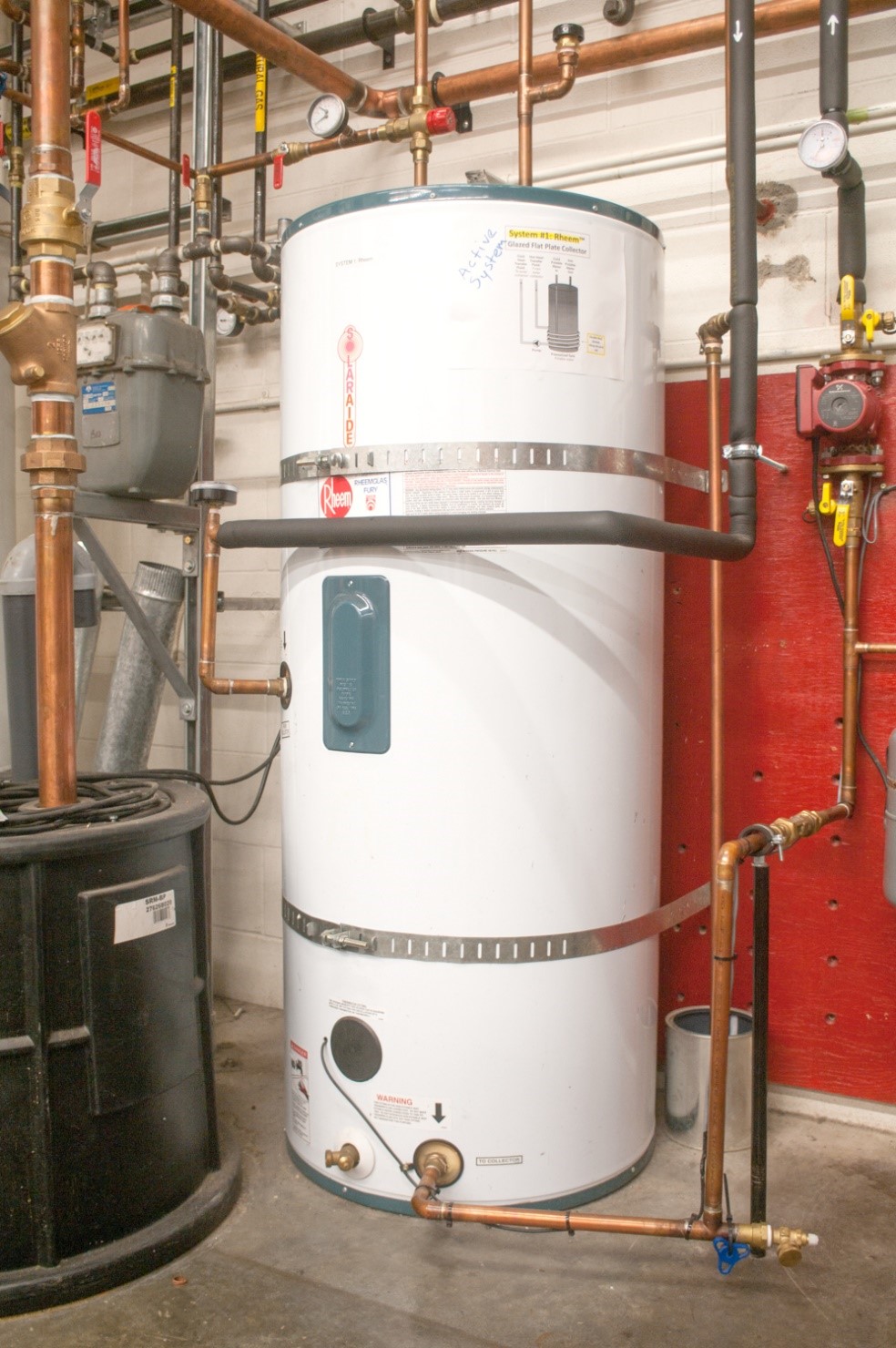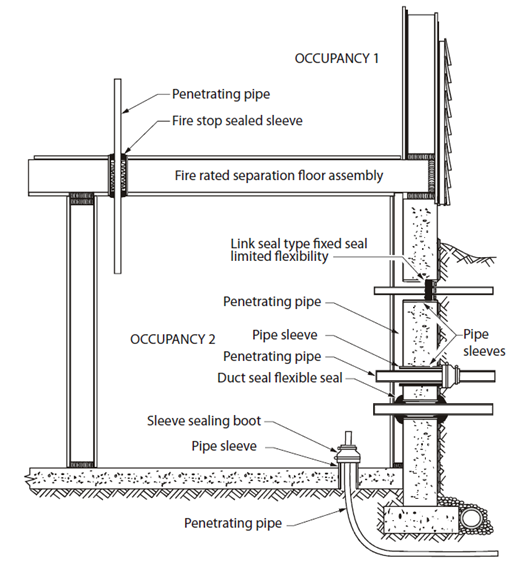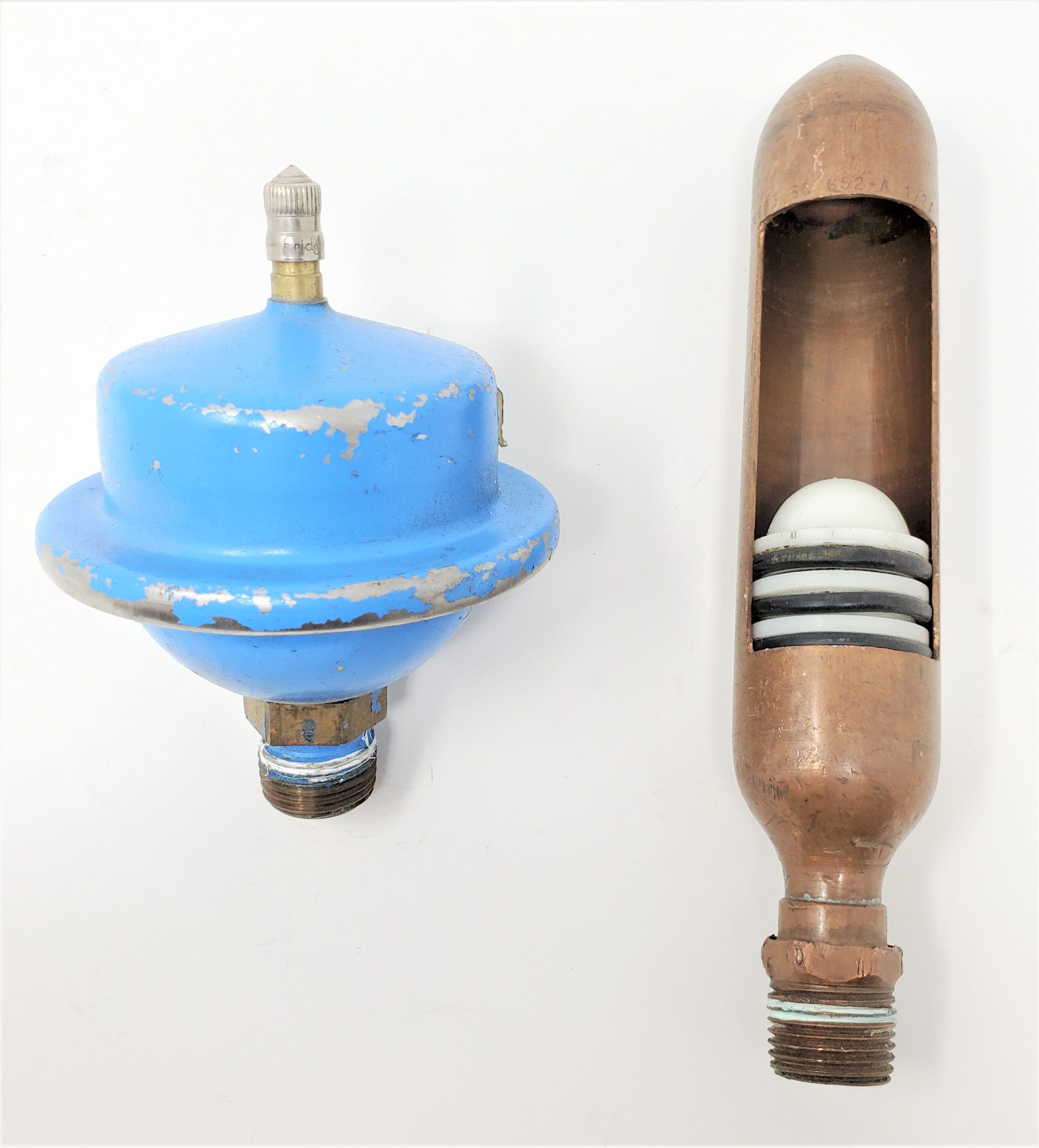Learning Task 3
Describe the Installation of the Building Water Supply System
Connected and installing the different materials used for potable water systems has been discussed in previous levels of the plumber program. This section will cover BCPC references not previously reviewed. Ultimately, it is the plumber’s responsibility to ensure the potable water supply system is installed to meet the minimum of the Code.
Restrictions on Re-Use
BCPC Sentence 2.2.1.2. (1) states that “materials and equipment that have been used for a purpose other than the distribution of potable water shall not be subsequently used in a potable water system.”
Working Pressure of a Water Service Pipe
BCPC Sentence 2.2.1.6.(1) states the “the working pressure rating of a water service pipe shall not be less than the maximum water main pressure at their point of connection as established by the water supply authority.”
Pipe and Fitting Applications
The “Summary of Pipe and Fitting Applications” Table A-2.2.5., 2.2.6. and 2.2.7. will direct the plumber to the acceptable pipe and fitting materials for a building water supply system.
Common pipe materials used for the building water service pipe are listed here, based on the calculated pipe size:
- ¾ inch = PEX is used for most installations, copper is rarely used, and PE is used occasionally for longer runs (e.g. over a 100’)
- 1 inch = PEX is used for most installations, with PE used occasionally
- 1¼ inch = PEX and PE
- 1½ inch to 3 inches = PVC solvent cement (typically sch 40 piping and sch 80 fittings)
- 4 inch and larger = PVC push-on (e.g. IPEX Blue Brute®) is used for most projects. Ductile-iron can be used when the water service is close to the surface or inside a building. PVC and ductile-iron were covered in detail in Competency B1.
Common pipe materials (based on current costs and availability) which are used for the building water distribution piping are listed here:
- Copper
- CPVC (e.g. IPEX Aquarise®)
- Polypropylene (e.g. Aquatherm Green Pipe)
- PVC
- Stainless steel
Galvanized Steel Pipe
BCPC Sentence 2.2.6.8. (3) states that galvanized steel pipe and fittings shall not be used in a water distribution system except in buildings of industrial occupancy, or for the repair of existing galvanized steel piping systems.
BCPC Notes to Part 2, A-2.2.6.8.(3).) states that the use of galvanized steel pipe and fittings in a water distribution system may have proven acceptable on the basis of past performance in some localities and its acceptance under this Code may be warranted.
Copper Joints Used Underground
BCPC Sentence 2.3.3.12.(1) states that joints in copper tubes installed underground shall be made with either flared or compression fittings, or be brazed using a brazing alloy within the American Welding Society’s AWS-BCuP range.
BCPC Sentence 2.3.3.12.(2) states that compression fittings shall not be used underground under a building.
Support of Piping
BCPC Subsection 2.3.4. covers capability of support, support for vertical piping, support of horizontal piping, support of underground piping, etc.
BCPC Table 2.3.4.5. covers the maximum horizontal spacing of supports for different piping materials.
BCPC Sentence 2.3.4.3.(1) states that where a hanger or support for copper tube or brass or copper pipe is of a material other than brass or copper, it shall be suitably separated and electrically insulated from the pipe or tube.
BCPC Sentence 2.3.4.3.(2) states that where a hanger or support for stainless steel pipe or tube is of a material other than stainless steel, it shall be suitably separated and electrically insulated from the pipe or tube.
Protection Against Freezing
Exposure of piping systems to freezing conditions will cause water and similar low freezing point fluids to freeze. The expansion of the fluid (water) as it freezes can rupture the pipe. When the water thaws, the resulting water damage can be extensive. The plumber level one content covered freeze protection of piping systems in detail.
There are several methods to prevent damage during freezing conditions, including:
- installing the piping within a heated structure
- applying pipe insulation, boxing in the piping, or tenting
- applying spray foam
- installing piping on the heated side of building insulation
- draining or blowing out the system during cold weather
- adding anti-freeze solution
- using hot boxes
- installing heat trace systems
- for buried piping, installing the piping below the frost line or insulating and heat tracing
- using constant circulation
BCPC Sentence 2.3.5.4.(1) states that where piping may be exposed to freezing conditions, it shall be protected from the effects of freezing.
BCPC Notes to Part 2, A-2.3.5.4. indicates that the TIAC Mechanical Insulation Best Practices Guide is a comprehensive source of information on the selection, installation and proper use of thermal insulation materials. (Note that Section 4 of this Guide is not included in the scope of this Note as it contains information on proprietary products, which are not within the mandate of the Code.)
BC Building Code Sentence 9.36.4.4.(1) states that the first 2 m of outlet piping downstream and of inlet piping upstream leading from a storage tank or heating vessel shall be covered with piping insulation that is at least 12 mm thick.
Plumbing System Components in Exterior Walls
The BC Building code addresses plumbing components placed within an exterior wall. If a water distribution pipe is installed in an exterior wall it must be insulated behind to the effective thermal resistance required for the above or below grade wall assembly. This means the plumber will have to increase the RSI value of insulation behind the piping being installed to ensure the continuity of insulation meets the minimum requirements in BC Building Code Sentence 2.36.2.5.(6)
Testing of Potable Water Systems
BCPC Subsection 2.3.7, Testing of potable water systems, is covered in the plumber level 4 content.
BC Plumbing Code Section 2.6. Potable Water Systems
Design
BCPC Sentence 2.6.1.1.(1) states fixtures supplied with separate hot and cold water controls shall have the hot water control on the left and the cold on the right.
Shut-off Valves
BCPC Article 2.6.1.3. covers shut-off valves.
BCPC Notes to Part 2, A-2.6.1.3.(5). states that where multiple risers convey the water supply to dwelling units, each dwelling unit’s water distribution system shall be provided with a shut-off valve located immediately where the water piping enters the suite so as to isolate the fixtures as well as the water distribution piping serving the dwelling unit’s fixtures. Fixture stopcocks or shut-off valves located immediately adjacent to a fixture may not be adequate to protect the water distribution piping. Where a dwelling unit is served by a single shut-off valve on the water supply, additional shut-off valves may be required to achieve compliance with Sentences 2.6.1.3.(4) and (7).
Thermal Expansion
BCPC Sentence 2.6.1.11.(1) states that protection against thermal expansion shall be required when a check valve is required by Article 2.6.1.5., a backflow preventer by Article 2.6.2.6., or a pressure-reducing valve by Article 2.6.3.3. (See Notes to Part 2, A-2.6.1.11.(1).)
BCPC Note to Part 2, A-2.6.1.11.(1) indicates that to accommodate the increase in pressure caused by thermal expansion within a closed water distribution system, one of the following should be installed:
- a suitably sized diaphragm expansion tank designed for use within a potable water system,
- an auxiliary thermal expansion relief valve (T.E.R. valve) conforming to CSA B125.3, “Plumbing Fittings,” set at a pressure of 550 kPa or less and designed for repeated use, or
- other means acceptable to the authority having jurisdiction.
Securement of Service Water Heaters
Tank-type water heaters are secured against tipping over for several reasons. In the event of major seismic activity, the tank-type water heater provides a source of drinking water. Securement of the water heater will also prevent the water pipes and, if connected, the gas pipe from disconnecting and causing serious damage. In many localities, a pair of seismic straps that wrap around the tank and attach to the walls is recommended for securing residential water heaters.
The BC Building Code Note to Part 9, A-9.31.6.2.(3), indicates that Guidelines for Earthquake Bracing of Residential Water Heaters is available from the California Office of the State Architect and provides more detail and alternate methods of bracing hot water tanks to resist earthquakes.

Sleeves and Fire-Stopping
Sleeves and fire-stopping were covered in detail in the plumber level one and 2 content. The figure below shows the location of several sleeves that may be used when installing a water supply system, including a water service pipe entering the building through a sleeve.

The openings created where pipes pass through walls and floors can cause problems by allowing water, smoke, fire, drafts, vapours and sound to enter or pass freely within the structure. Pipe sleeves installed around the pipe may need to be sealed at one or both ends. Pipe sleeves and the pipe seals installed in fire separations must be fire rated. The fire rating must be equal to the rating of the fire separation.
Water Hammer
The BC Plumbing Code states that provision shall be made to protect the water distribution system from the adverse effects of water hammer in Article 2.6.1.9. The Notes to Part 2, A-2.6.1.9.(1) in the BCPC includes more information on water hammer prevention.
Water hammer is a buildup of pressure in a length of horizontal or vertical pipe that occurs when a valve or faucet is closed suddenly. The longer the pipe and the greater the water velocity, the greater the pressure exerted on the pipe, which can be many times the normal static water pressure and be sufficient to damage the piping system. Since air chambers made from a piece of vertical pipe do not provide acceptable protection, pre-manufactured water hammer arresters are required to address this potential problem. Water hammer arresters need not be installed at every valve or faucet, nor in every piping system.
Since the BCPC is silent on the appropriate location to install a water hammer arrestor in a water distribution system or on a water supply pipe, it is best to consult manufacturer’s installation details on where they should be installed in relation to the fixture(s) being served.
Water hammer arrestors come in two basic designs. One design, used mostly in residential applications, has a pre-charged air chamber with a sealed-in diaphragm, and is rechargeable using a shraeder valve connection. The other common design incorporates a pre-charged, permanent sealed air chamber to absorb the shock. The sealed chamber prevents the loss of air to the water and insures long and trouble-free life since only a piston is the only moving part. This design is manufacturer in larger sizes for use on residential and ICI applications.
The preferred location for a water hammer arrestor serving multiple fixtures is at the end of the branch line between the last two fixtures served. Different designs of water hammer arrestors are made for individual fixtures such as:
- Dishwashers
- Clothes washers
- Fixtures with fast closing positive shutoff valves

Now complete Self-Test 3 and check your answers.
Self-Test 3
Self-Test 3
- Which type of water service pipe is not rated for hot water?
- Polyethylene series 160
- Polypropylene
- Polyethylene (Cross-linked)
- Chlorinated Polyvinyl Chloride
- Which condition would most likely cause water hammer?
- Piping sized too small
- Piping sized too large
- Slowly closing a valve
- Quickly closing a valve
- Can a shut-off valve be installed on the pipe between any tank and the relief valve, or on the discharge lines from the relief valve?
- No
- Yes
- A water distribution system shall be installed so the system can be drained or blown out with air.
- True
- False
- Every fixture supplied with separate hot and cold water controls shall:
- Have a mixing valve installed
- Have an anti-scald device installed
- Have an aerator installed that has no provision for backflow
- Have the hot water control on the left and the cold on the right
- In all applications, which fixture(s) must have a shut-off valve provided on the water supply pipe?
- Water closets
- Water closets and lavatories
- Kitchen sinks and lavatories
- Water closets, kitchen sinks, and lavatories
Check your answers using the Self-Test Answer Keys in Appendix 1.
Media Attributions
- Figure 1 Hot water storage heater with seismic restraint using manufactured strapping by Camosun College is licensed under a CC BY 4.0 licence.
- Figure 2 Typical building sleeve and penetration locations by Camosun College is licensed under a CC BY 4.0 licence.
- Figure 3 Different water hammer arrestor designs by Camosun College is licensed under a CC BY 4.0 licence.

